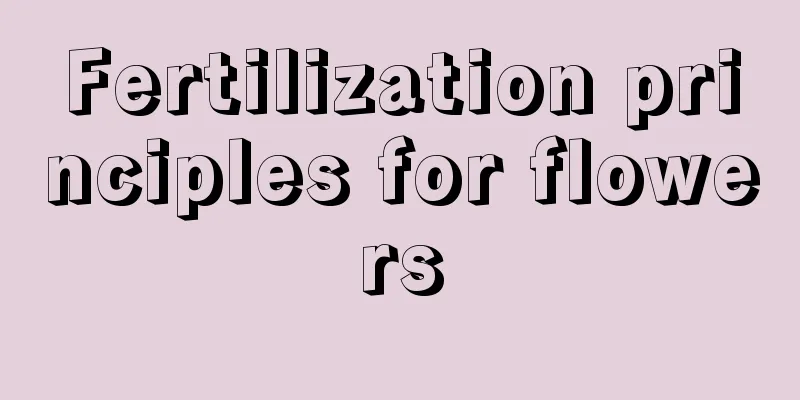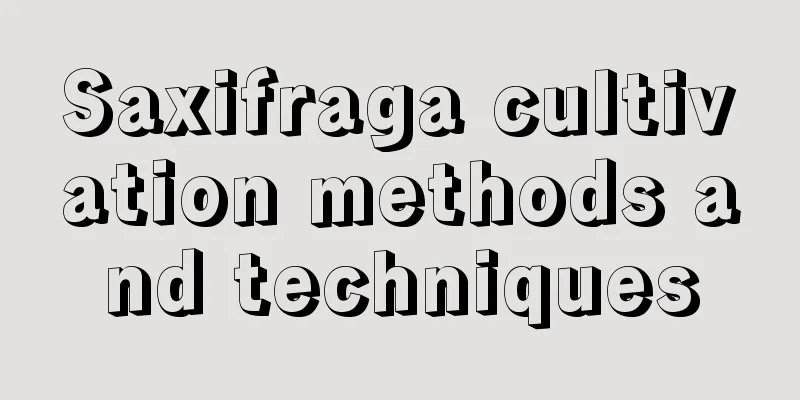Fertilization principles for flowers

Fertilize according to the seasonSpring and summer are the peak growth periods for plants. Plants grow rapidly during this period and have a greater demand for nutrients. It is necessary to apply "three-element" fertilizers mainly composed of nitrogen fertilizers. A small amount of phosphorus and potassium fertilizers can be applied in autumn to improve the plants' ability to resist cold and survive the winter. In winter, flowers enter a dormant period, and a small amount of fertilizer can be applied to meet growth needs. Fertilize according to plant growthHealthy plants grow fast and require more nutrients, so they need to be fertilized frequently with small amounts of fertilizer; diseased plants grow slowly and require less fertilizer, so less fertilizer or no fertilizer can be applied. Fertilize according to the plant growth periodDuring the bud stage, the plants should be fertilized with fertilizers mainly composed of phosphorus and potassium, which can promote the differentiation of flower buds and make the plants bloom more; it is not advisable to apply fertilizer when the plants are flowering, otherwise the flowering period will be shortened; fertilizing when the plants are setting fruit but the fruit has not yet firmly established will cause fruit drop. It is advisable to apply phosphorus and potassium fertilizers when the fruit is firmly established, especially during the fruit expansion period, to promote fruit growth. Fertilization according to plant typeAlkaline fertilizers are prohibited for certain plants, such as azaleas and gardenias. For flowers that need heavy pruning every year, the proportion of phosphorus and potassium fertilizers should be appropriately increased to promote the sprouting of new branches. Nitrogen fertilizers are suitable for flowers that are mainly for viewing leaves. Phosphorus and potassium fertilizers are suitable for the flowering period of fragrant flowers. Fruit-viewing flowers should be fertilized with sufficient fertilizer during the fruit-bearing period to increase the amount of fruit. |
<<: How to apply fertilizer to flowers
>>: The difference between decomposed and undecomposed fertilizers
Recommend
What to do if the leaves of Polygonatum odoratum turn yellow
The reason why the leaves of Polygonatum odoratum...
Common varieties of bellflower
Purple bellflower This is a relatively common var...
How to grow loofah to achieve high yield?
Luffa is a vegetable widely grown in rural areas....
These 7 kinds of flower scents are poisonous, so don’t put them in your bedroom! A must-see for families with elderly and children!
Lily Reasons for prohibiting bedroom: The scent o...
Cultivation methods and precautions for newly purchased asparagus fern
Asparagus fern , with its elegant posture and fre...
Cultivation methods and precautions of Chiba grass
1. Temperature The growing environment of clover ...
What to do if the daisy leaves wilt
1. Reasons 1. Improper moisture If it wilts, it m...
Where do gymnosperm seeds come from?
Where do gymnosperm seeds come from? The female a...
Where is the mango tree suitable for growing? What are the growing environments and conditions?
Where do mango trees grow? Mango trees are suitab...
Where do red beans grow? Where do they usually grow in China?
Red bean growth habits Red beans are dicotyledono...
The most diligent and disease-resistant clematis. Which varieties of clematis bloom the most and are the best to grow?
Clematis is a climbing vine that can climb along ...
The difference between the use of potassium permanganate and carbendazim
Use of potassium permanganate and carbendazim Whe...
What is the difference between Chlorophytum comosum and Panax notoginseng?
Family Chlorophytum comosum family Chlorophytum c...
Time and method of cutting hydrangea
Hydrangea cutting time It is suitable to carry ou...
How to apply urea for best results?
Urea is a common nitrogen fertilizer that is econ...









